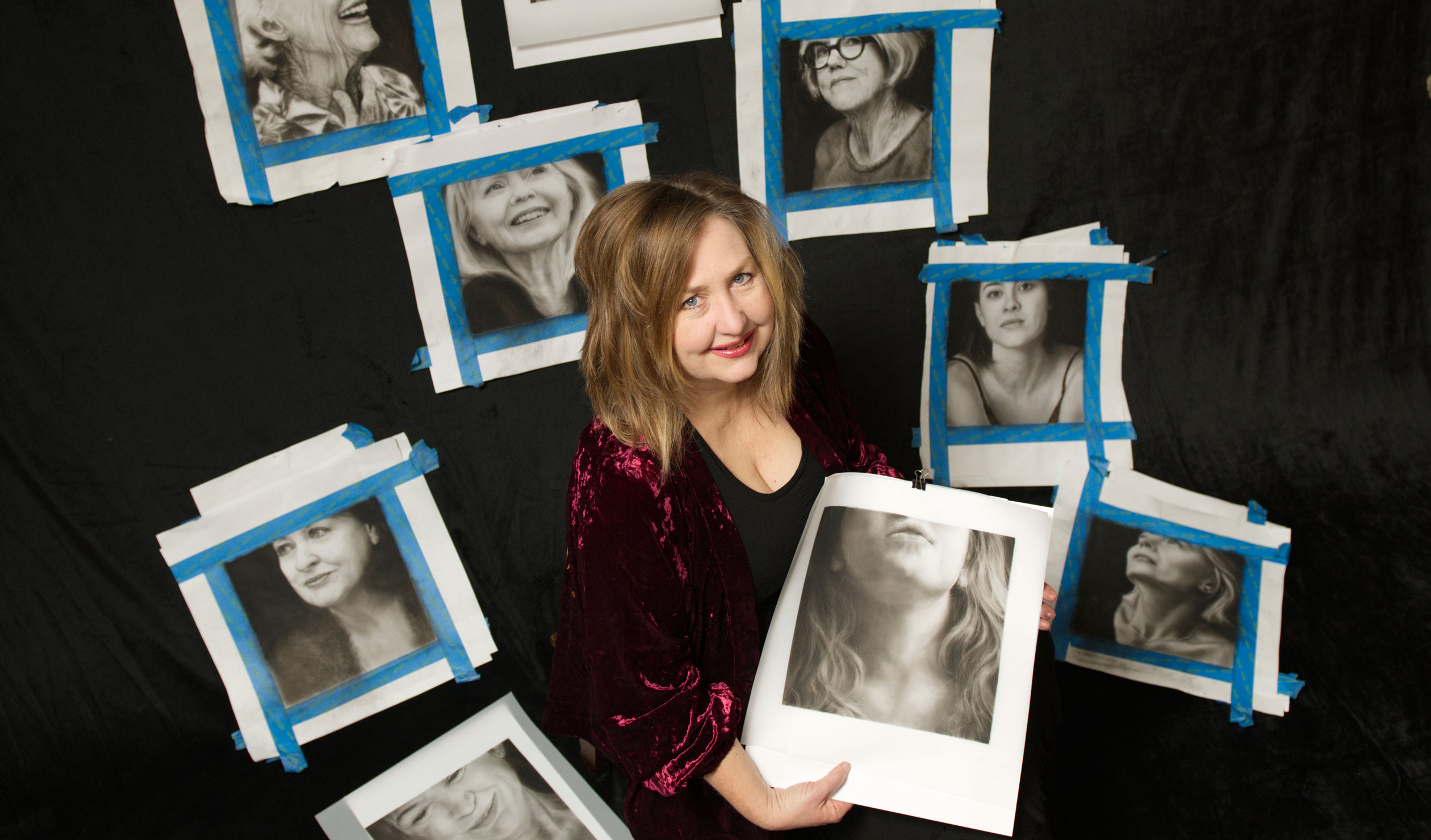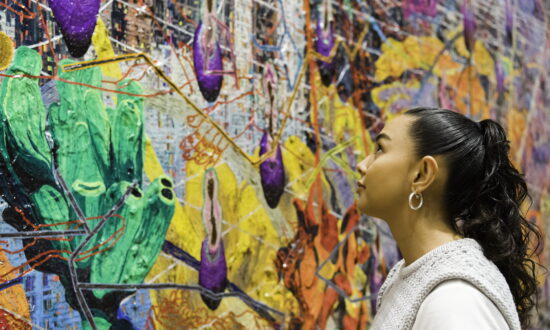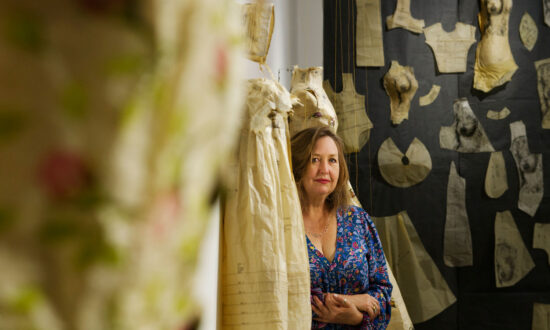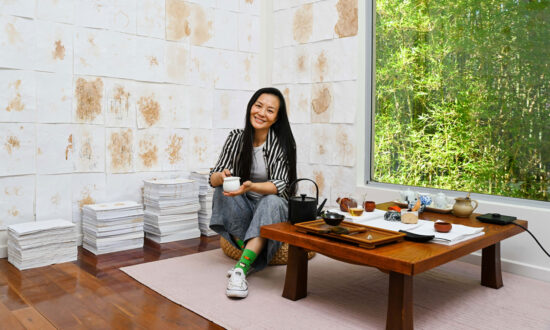A surreal wedding sits at the heart of Margaret Ambridge’s exhibition Becoming Invisible? at the praxis ARTSPACE.
As viewers walk in the door of the Bowden gallery, they encounter a toile, the first cut of a finished wedding dress. Inscribed on the dress is the naked image of a young bride.
Then, in the main room of the exhibition, there’s a ghostly wedding party of floating avatars made of dress patterns from the 1950s. On these dress patterns, we see life-sized graphic drawings of the aged bodies of those in the wedding party as they would be now, in their 80s and 90s.
For Ambridge, the wedding party symbolises the dreams and the necessarily fleeting physical beauty of youth contrasted with the reality of the length and breadth of women’s lives as they grow, mature, age and confront death. Sculptural and video works also inform the conversation.
“So you start off with this idealised young figure with all their hopes and dreams for the future and the beauty, and [the wedding party] is actually where all of these women would be now – if they were still alive.”
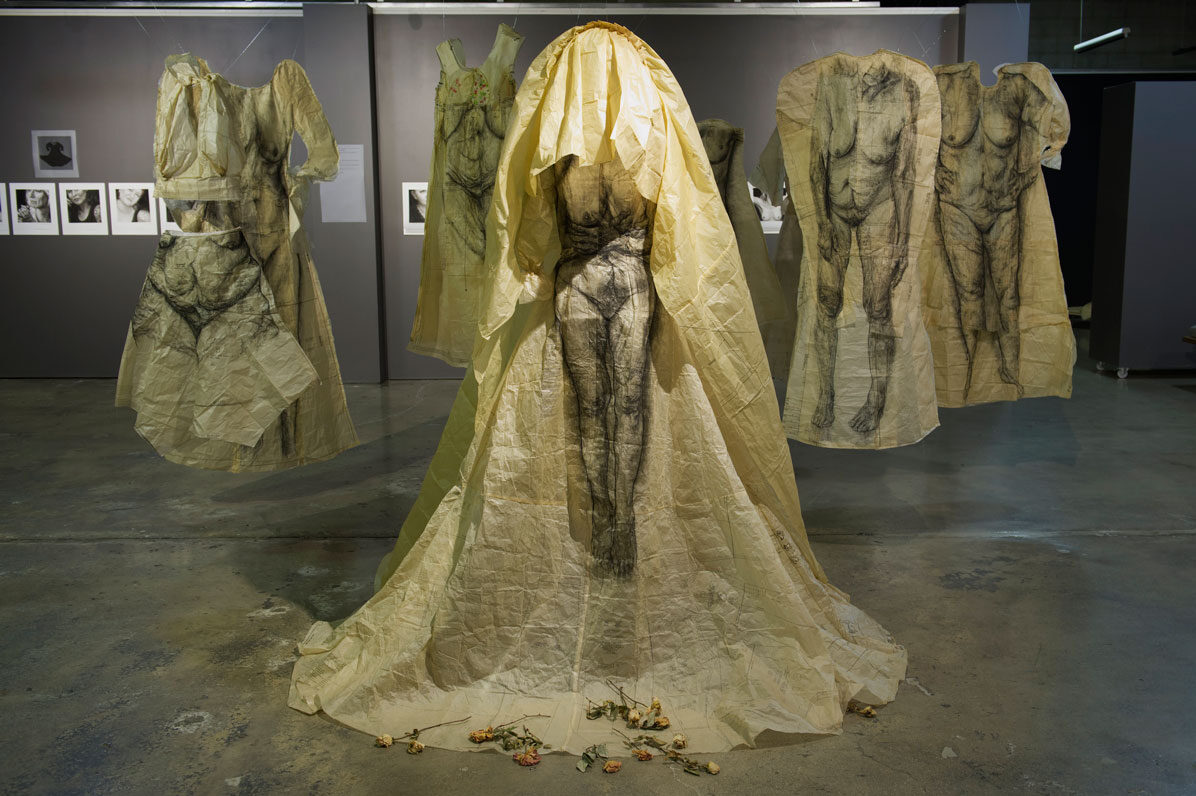
Wedding party is a central feature of Margaret Ambridge’s Becoming Invisible? exhibition.
The wedding party is surrounded by an audience of almost 100 charcoal portraits of women ranging in age from 0 to 102. The portraits, grouped in age decades, tend to focus on the subjects’ necks, where lines in the fine skin are said to reveal their true age.
Informing the portraits are many hours of Ambridge’s interviews with more than 100 participants about the importance of physical beauty, ageing, the power of women in general – and the invisibility of older women.
Selections from the interviews are typed up and displayed on translucent paper at the end of each age cohort. There’s also a video element in which a number of participants of all ages anonymously, bravely strip off a black nightgown and share their vulnerable bodies.
The conversations Ambridge had with her interviewees explored the multitudes of ways in which women first experience the social construction of worth based on their appearance, court and/or fear the fickle male gaze, delight in their sexual power, and then move on to negotiate the process of growing independence, maturity and ageing.
On the title of the exhibition, Becoming invisible?, she says “something happens when you turn 50”.
“You just start to age, look older and I get a sense you do start to disappear.”

Me at 63 – a charcoal portrait by Margaret Ambridge.
Ambridge says the biological research indicates that as women lose fertility, they are “not required to be seen” because they’re no longer fertile. But the reductive biological explanation belies the social and cultural impact on individual women.
“Certainly you feel it when you’re just down the street and when go into a bar and you’re trying to get a drink. The younger ones get served first and you really have to put yourself out there, demand a spot. I heard that at least five, 10 times in the interviews.”
But many women also welcomed the relative absence of the male gaze and its judgment.
“I was pleasantly surprised,” she says. “Probably half of the women said it was a relief.”
The exhibition and conversations started with a gathering at Ambridge’s studio in September last year. Friends spoke to friends and she occasionally saw women with interesting faces in the street and asked if she could talk with them.
Ambridge interviewed them at length, asking for responses to written quotes and exploring open-ended conversations. She then took a series of photographs to assist in the development of each portrait.
The result is a series of images that act like windows on the character of the individual sitters, each titled “Me at [a specific age]” – as if, in some sense, they are one person on life’s journey.
“You’re trying to capture where they are at. I had to feel I had captured where they are in their life. How strong they are or how confident they are in their skin, how fragile they are…”
One of Ambridge’s interviewees, emeritus professor and tapestry maker Kay Lawrence, says she enjoyed the conversation.
“She [Ambridge] has the capacity to put you at your ease,” Lawrence says.
“It’s very important to show women in their variety – in terms of age and youth and experience – rather than the stereotypes. Women are so used to being observed and meeting unrealistic expectations and being judged on their attractiveness.”
Of course, Lawrence has watched herself going through this experience. “I always like it when the bathroom mirror fogs up,” she laughs.
“I think, in a sense, women are sometimes more attractive when they get older. Your experience shows up on your body, on your face, your hands and everything.”
Lawrence points to the irony that when people are the most attractive, they are their most insecure.
“You feel like telling your younger self, ‘Forget about it. Just relax. You look fabulous’.”
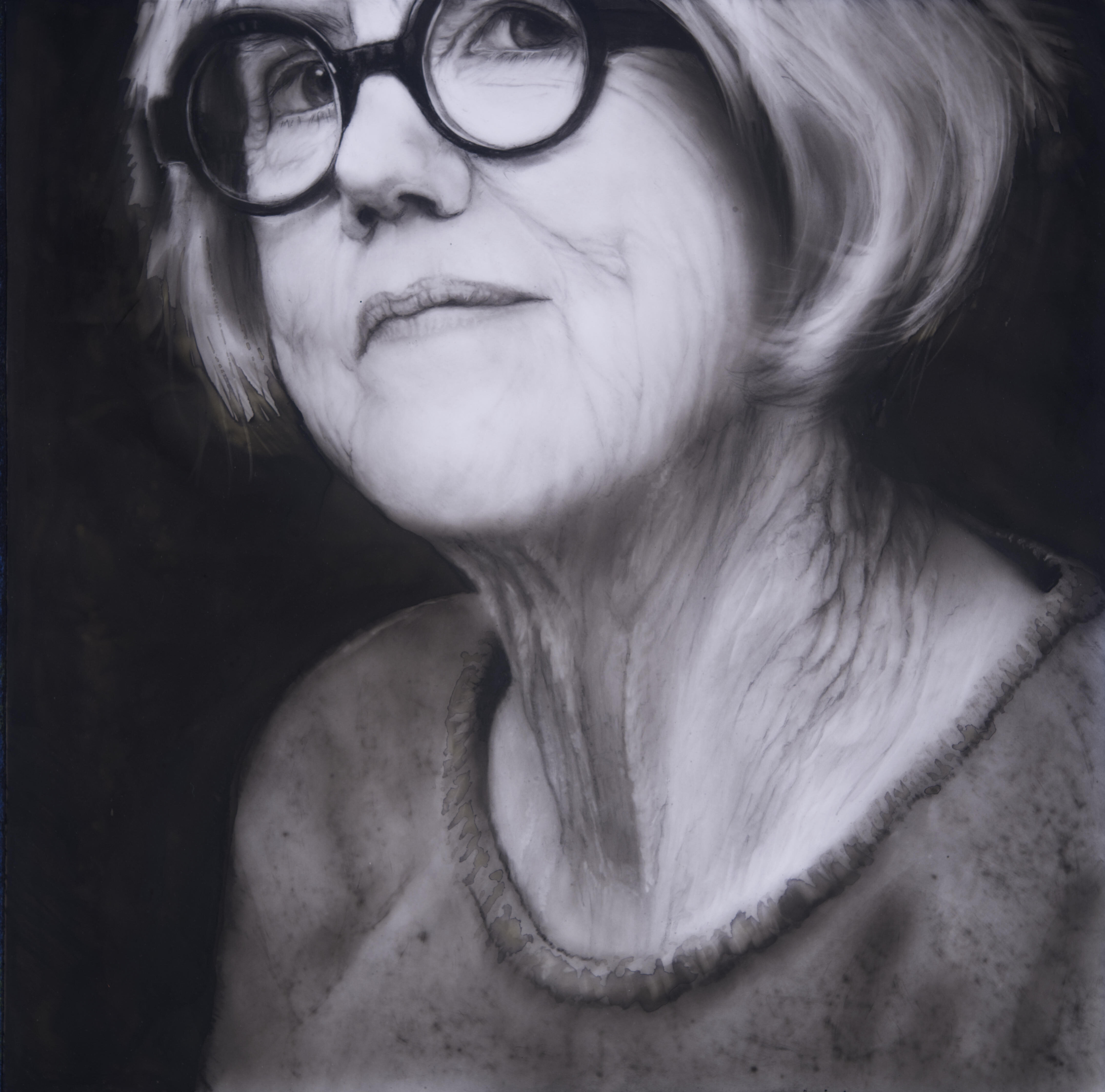
Me at 75 – Margaret Ambridge’s portrait of Kay Lawrence.
Ambridge’s own life is a reminder that nothing is predictable.
At the end of high school she wanted to be an artist, but family experience showed you can’t rely on art to fund a living.
Ambridge says she was offered a place studying medicine but opted to train in physiotherapy, so there would be a possibility to return to art. “At that time I thought it wouldn’t be possible to do both.”
When she was 24, her three-year marriage ended and her mother enrolled her in life drawing at Adelaide Central School of Art.
“I did one subject a year at night for nine years [at the same time as working as a physio full time] and then Mum got sick.”
An only child, Ambridge was her parents’ full-time carer through the harrowing process of their dying.
Even now, she works as a physiotherapist for three days a week, working with people in their last stages of life, but she values the intimacy of working in that area.
“You have those special talks with people in palliative care that you don’t get to have with friends. I love that depth of conversation,” she says.
She sees her current exhibition as a catalyst to create moments of conversation between women of different age cohorts, and between men and the women in their lives.
“You can see the power of art to allow a safe place to have those difficult, confronting and yet honest conversations that you don’t normally have,” Ambridge says.
Launching the exhibition at praxis, CEO of the Adelaide Central School of Art Penny Griggs asked a central question: “Are we more afraid of looking old than getting old?”
“It does feel like there’s a shift happening and there is a celebration of women and women’s bodies and these incredible portraits of women along the timeline and the reflections of women about getting older or reflecting up and what that might mean,” Griggs said.

Get InReview in your inbox – free each Saturday. Local arts and culture – covered.
Thanks for signing up to the InReview newsletter.
In her catalogue essay, Dr Carol Lefevre speaks the truth for all women, invisible or not:
“If you do not see us when you look at us, it is not our loss, but yours.”
Becoming Invisible?, a solo exhibition by Margaret Ambridge, is at praxis ARTSPACE in Bowden until September 16 and is part of the 2022 SALA Festival.
Support local arts journalism
Your support will help us continue the important work of InReview in publishing free professional journalism that celebrates, interrogates and amplifies arts and culture in South Australia.
Donate Here
